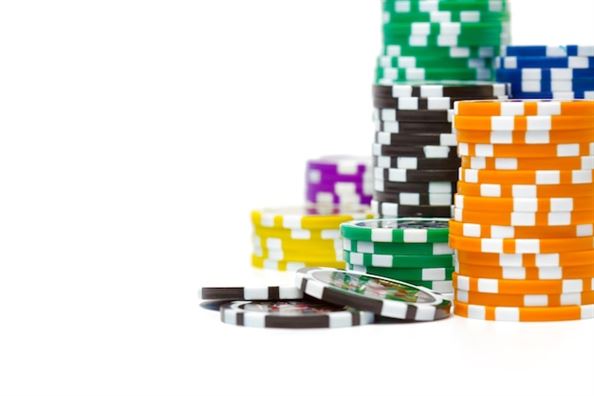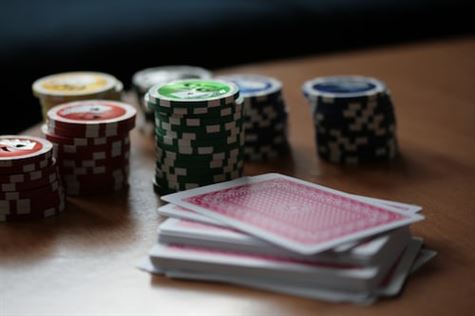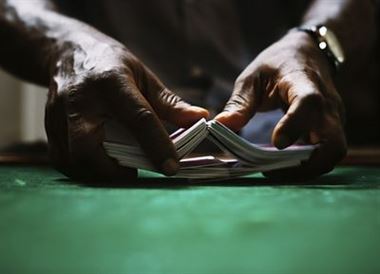The Numbers Game: Understanding Probability in Poker is a comprehensive guide that delves into the world of probability and its application in the game of poker. This guide aims to provide readers with a solid understanding of the mathematical concepts and calculations involved in poker, enabling them to make more informed decisions and improve their overall gameplay. Whether you’re a beginner or an experienced player, this guide offers valuable insights and strategies to enhance your poker skills through a deeper understanding of probability.
The Basics of Probability in Poker: Understanding Your Chances of Winning
At its core, probability is the likelihood of an event occurring. In poker, this translates to the likelihood of certain hands being dealt or certain cards being drawn. To understand probability in poker, it is essential to grasp the concept of outs. Outs are the cards that can improve your hand and potentially lead to a winning combination. Calculating outs allows players to determine their chances of hitting a winning hand.
To calculate outs, players must first assess their current hand and compare it to the desired winning hand. For example, if a player has four cards to a flush, they have nine outs remaining in the deck (there are thirteen cards of each suit, and four of them are already in the player’s hand). By knowing the number of outs, players can then calculate their chances of hitting the desired hand.
The next step in understanding probability in poker is to convert outs into odds. Odds represent the ratio of the number of ways an event can occur to the number of ways it cannot occur. In poker, odds are typically expressed as a ratio or a percentage. To convert outs into odds, players can use the rule of 2 and 4. This rule states that players can multiply their number of outs by 2 on the flop to get an approximate percentage of hitting their hand by the river. On the turn, players can multiply their outs by 4 to estimate their chances.
For example, if a player has nine outs on the flop, they can multiply that number by 2 to get an approximate 18% chance of hitting their hand by the river. On the turn, the player can multiply their nine outs by 4, resulting in a 36% chance of hitting their hand by the river. These odds can then be used to make more informed decisions about whether to continue betting or folding.
Understanding probability in poker also involves considering pot odds. Pot odds compare the current size of the pot to the cost of a contemplated call. By comparing pot odds to the odds of hitting a hand, players can determine whether a call is profitable in the long run. If the pot odds are higher than the odds of hitting a hand, it may be a favorable decision to make the call.
Calculating Pot Odds: How to Use Probability to Make Informed Decisions in Poker
Pot odds refer to the ratio of the current size of the pot to the cost of a contemplated call. By calculating pot odds, players can determine whether a particular bet or call is profitable in the long run. To calculate pot odds, you need to compare the size of the bet you are facing to the size of the pot. For example, if the pot is $100 and your opponent bets $20, the pot odds would be 5 to 1 ($100 divided by $20).
Once you have calculated the pot odds, you can then compare them to the odds of completing your hand. This is where probability comes into play. Probability is a mathematical concept that measures the likelihood of an event occurring. In poker, probability is used to determine the chances of making a specific hand.
To calculate the probability of making your hand, you need to know the number of outs you have. Outs are the cards that will improve your hand and give you a winning combination. For example, if you have four cards to a flush, there are nine remaining cards of that suit in the deck. Therefore, you have nine outs to complete your flush.
Once you know the number of outs, you can use the concept of “the rule of 4 and 2” to estimate your chances of making your hand. The rule of 4 and 2 states that you can multiply your number of outs by 4 to get an approximate percentage of making your hand on the next card, and by 2 to get an approximate percentage of making your hand by the river.
For example, if you have a flush draw with nine outs, you can multiply nine by 4 to get 36%. This means you have approximately a 36% chance of making your flush on the next card. If you multiply nine by 2, you get 18%. This means you have approximately an 18% chance of making your flush by the river.
Now that you know the pot odds and the probability of making your hand, you can compare the two to make an informed decision. If the pot odds are lower than the probability of making your hand, it is profitable to make the call. Conversely, if the pot odds are higher than the probability of making your hand, it is not profitable to make the call.
The Role of Probability in Bluffing: Analyzing the Likelihood of Success
Bluffing is a fundamental aspect of poker, allowing players to deceive their opponents and win pots even when they have a weak hand. However, successful bluffing requires a deep understanding of the likelihood of success. This is where probability comes into play.
When considering whether to bluff, a player must assess the probability of their opponents folding. This can be influenced by a variety of factors, such as the strength of their opponents’ hands, their own table image, and the size of the pot. By analyzing these variables, players can make informed decisions about when to bluff and when to fold.
To calculate the probability of a successful bluff, players must consider the number of “outs” they have. Outs are the cards that can improve a player’s hand and potentially win the pot. For example, if a player has four cards to a flush, there are nine remaining cards of that suit in the deck. Therefore, the player has nine outs to complete their flush.
Once the number of outs is determined, players can use the concept of “pot odds” to assess the profitability of their bluff. Pot odds compare the potential reward of winning the pot to the cost of making a bet. If the pot odds are greater than the odds of completing the hand, it may be a favorable situation to bluff.
For instance, if the pot is $100 and a player needs to bet $20 to continue, the pot odds are 5:1. If the odds of completing the hand are 4:1, the player would have a positive expected value and should proceed with the bluff. However, if the odds of completing the hand are 6:1, the player would have a negative expected value and should fold.
It is important to note that probability in poker is not an exact science. It is based on calculations and estimations, but there is always an element of uncertainty. Skilled players understand that probability is just one piece of the puzzle and must be used in conjunction with other factors, such as reading opponents and understanding the dynamics of the game.
Furthermore, probability can also be used to detect bluffs from opponents. By analyzing the likelihood of certain hands being held, players can make educated guesses about the strength of their opponents’ cards. This information can then be used to make informed decisions about whether to call, raise, or fold.
Advanced Probability Concepts in Poker: Combining Multiple Factors for Better Decision Making
Probability is the likelihood of a particular event occurring. In poker, it is the likelihood of a certain hand or outcome happening. To calculate probability, we need to consider the number of possible outcomes and the number of favorable outcomes. For example, if we have a flush draw with nine outs, there are 47 unknown cards left in the deck. Therefore, the probability of hitting our flush on the next card is 9/47.
However, poker is not just about calculating the probability of a single event. It is about combining multiple factors to make the best decision possible. One important concept in poker is pot odds. Pot odds compare the current size of the pot to the cost of a contemplated call. By comparing the pot odds to the probability of winning, we can determine whether a call is profitable in the long run.
Let’s say we have a flush draw with nine outs and the pot is $100. Our opponent bets $20, making the pot $120. We need to call $20 to see the next card. The pot odds are 120:20, or 6:1. If the probability of hitting our flush is greater than 1/6, it is a profitable call. In this case, our probability of hitting the flush is 9/47, which is approximately 0.19 or 19%. Since 19% is greater than 1/6, it is a profitable call in the long run.
Another important concept in poker is expected value (EV). EV is the average amount of money we expect to win or lose on a particular decision over the long run. To calculate EV, we multiply the probability of each outcome by the amount we stand to win or lose. If the EV is positive, it is a profitable decision.
Let’s consider a scenario where we have a pair of kings and our opponent bets $50 into a $100 pot. We estimate that our opponent has a range of hands that we beat 60% of the time and hands that beat us 40% of the time. If we call, we have a 60% chance of winning $150 (the pot plus our opponent’s bet) and a 40% chance of losing $50. The EV of calling is (0.6 * $150) – (0.4 * $50) = $90 – $20 = $70. Since the EV is positive, it is a profitable call.
Combining multiple factors, such as probability, pot odds, and EV, allows us to make better decisions at the poker table. By considering all these factors, we can determine whether a call, raise, or fold is the most profitable move in a given situation. It is important to note that poker is a game of incomplete information, and we can never know the exact probabilities or outcomes. However, by using probability as a guide, we can make more informed decisions and increase our chances of success.
Probability and Hand Ranges: Using Statistics to Assess Your Opponents’ Likely Hands
Probability is a branch of mathematics that deals with the likelihood of events occurring. In poker, probability is used to calculate the chances of certain hands being dealt or certain cards being drawn. By understanding the probabilities, players can make more accurate assessments of the strength of their own hand and the likely strength of their opponents’ hands.
Hand ranges are a concept in poker that refers to the range of possible hands that an opponent could have based on their actions and the community cards on the table. By narrowing down the possible hands that an opponent could have, players can make more accurate assessments of their opponents’ likely holdings.
To assess an opponent’s hand range, players must consider a variety of factors, including the player’s position, their betting patterns, and the community cards on the table. For example, if a player in early position raises before the flop, their hand range is likely to be stronger than if they were in a later position. Similarly, if a player bets aggressively on the flop and turn, their hand range is likely to be stronger than if they were betting passively.
Once a player has narrowed down their opponent’s hand range, they can use statistics to further assess the likelihood of their opponent having a certain hand. This is where probability comes into play. By calculating the probability of certain hands being in an opponent’s range, players can make more informed decisions about whether to bet, call, or fold.
There are several tools and resources available to help players calculate probabilities and assess hand ranges. Online poker calculators can quickly calculate the probability of certain hands being dealt or certain cards being drawn. These calculators take into account the number of cards in the deck, the number of cards that have been dealt, and the number of cards that are still unknown.
In addition to online calculators, players can also use their own mathematical skills to calculate probabilities. By understanding the basic principles of probability, players can make more accurate assessments of their opponents’ likely hands. For example, if a player knows that there are four aces in the deck and one has already been dealt, they can calculate the probability of their opponent having an ace in their hand.
Understanding probability and hand ranges is a crucial skill for any serious poker player. By using statistics to assess their opponents’ likely hands, players can make more informed decisions and increase their chances of winning. Whether using online calculators or their own mathematical skills, players can gain a competitive edge by understanding the numbers game of poker. So next time you sit down at the poker table, remember to consider the probabilities and assess your opponents’ likely hand ranges.

















